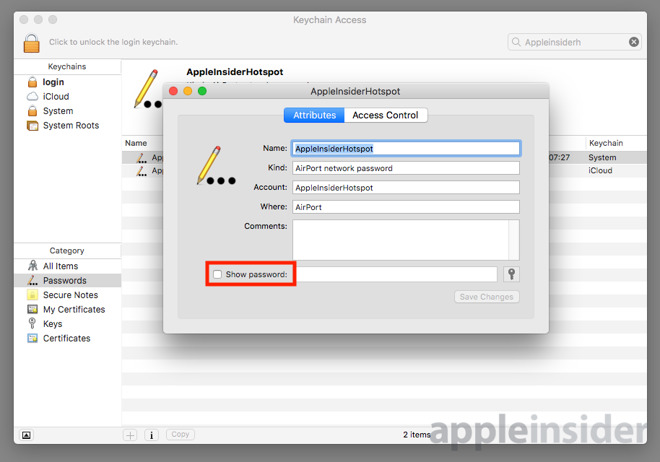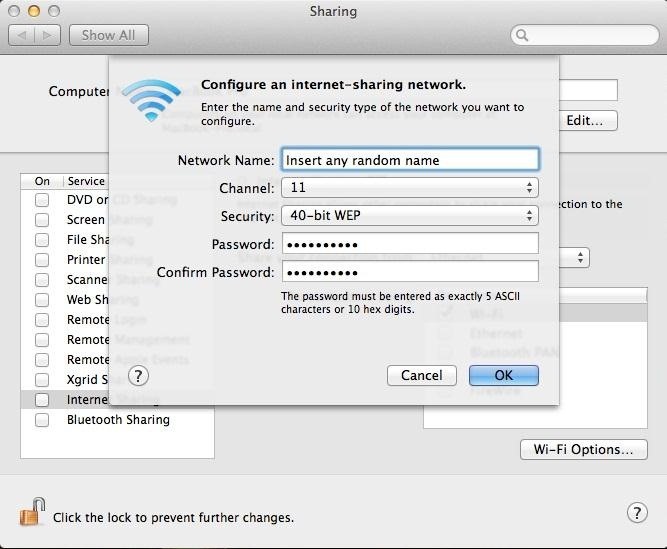- Follow the steps below to enable Epson Connect for your Epson printer on a Mac. Important: Your product needs to be set up with a network connection before it can be set up with Epson Connect. If you need to set up the connection, see the Start Here sheet for your product for instructions.
- After setting up, you can disconnect the cable from your printer and Mac and the printer should remain connected to the Wi-Fi network. See the Apple Support article Connect an AirPrint printer to a Wi-Fi network. Add the printer to your list of available printers: Choose Apple menu System Preferences, then click Printers & Scanners.
The Network Diagnostics utility built into OS X can track down, and sometimes repair, network connection problems. Nudge Wi-Fi back to life. If your Mac connects to the Internet via Wi-Fi. After Mac Restarts, see if you are now able to connect to WiFi. Forget WiFi Network. Making the Mac forget its WiFi Network and then rejoining the WiFi Network is known to fix this issue. Click on the Apple Logo in top-menu bar and select System Preferences in the drop-down menu. On System Preferences screen, click on the Network.
When Wi-Fi stops working on a Mac, it can be a nightmare. All of a sudden, you can’t make progress or even start on something without an internet connection.
Most of us take the always-on Wi-Fi connectivity for granted. Even when traveling thousands of miles from home in developing countries, most businesses, homes, and even public spaces are equipped with modems that broadcast wireless internet.
How to fix Mac won't connect to Wi-Fi
In many respects, Wi-Fi has become a commodity, a necessity for the smooth functioning of business, academia, governments, and the media. Thanks to Wi-Fi, we are more connected than ever before. Our music, emails, and even shopping are dependent upon it.
So if you’ve ever had Wi-Fi connectivity issues on a Mac, you might want to save this article for offline reading, just in case. There are a few ways to these problems.
1. Check your macOS
When Mac users update their operating system, Wi-Fi connectivity can vanish.
At the time of the original version of El Capitan, a lot of users found they couldn't connect to Wi-Fi, which made it harder for Apple to release an update that included a patch solving this particular problem. In some cases, users had to download the updated version using a phone as a Personal Hotspot, which caused other problems, such as extra data costs.
Unfortunately, as a result of the recent macOS Catalina release, some users were experiencing the same problem.
Turn Wi-Fi on and off

One way to fix this is to switch your Wi-Fi off and back on again. At the same time, it may also be worth changing the name of your home (or office) network and setting a new password, which you can do through your internet provider. If necessary, you should be able to do this through a mobile phone, and then check whether your Mac will connect again.
2. Wi-Fi signal issues
Sometimes it’s Wi-Fi signal causing all the problems. If that’s what you’re suspecting, here are the possible solutions:
Run a speed test and get a better signal
A good way to work out whether the problem is the Mac or Wi-Fi itself is using an analyzer app. To analyze your Wi-Fi network signal strength, use WiFi Explorer or NetSpot.

You may find that furniture and walls in your place are blocking or reducing the signal. When you are checking the results, it might be helpful to move your wireless router to a better location or ask if your broadband provider can install a signal booster.
Make WiFi faster on Mac
Download Setapp to declutter your Mac and make WiFi powerful. There's at least one tool that handles the task perfectly.
Don’t trust public networks
Ensure your personal information is securely protected on public Wi-Fi. While every public network can potentially “read” the data you send and receive, dealing with sensitive information on a public network is a huge risk. To stay safe, control your network connection with Activity Monitor or iStat Menus— perfect for real-time tracking of what’s being sent and received via network.
To prevent suspicious apps from accessing your data, use TripMode. The app allows to activate blocking right from your menu bar. So it’s a one-switch solution that you can use every time your Mac connects to a public network.
Secure your private network
Using your own network is certainly more secure than accessing public ones. But it’s never a risk-free deal. Private or public, there are a few tips that will help you stay safe:
Change the SSID name so that it’s hard to identify the type of router you use.
Solidify encryption. There are several options for Wi-Fi protection, out of which WPA2 is considered one of the most secure.
Use a VPN client. A reliable VPN app like Shimo will help you handle and place restrictions on the network you use. Plus, it has a module for setting multiple connections.
3. Forget your Wi-Fi network
Sometimes you need to let go to reconnect again. That also works for Wi-Fi signals.
Assuming you’ve already tried rebooting your Mac and router, disconnecting entirely is a tried-and-tested solution.
Here are the steps for doing this slightly trickier fix:
- Turn off Airport
- Go to Systems Preferences
- Network > Select Wi-Fi
- Click Advanced
- Select the network you want to disconnect from and click on minus, then agree.
Do that on any other device you can’t connect with, and then start the process to connect to that network, entering the password, and (fingers crossed) you should be connected again.
4. Declutter your Mac

One of the other problems that could be causing connectivity issues is bloat, junk, and clutter. Over time, Macs can get full of things they really don't need to store, such as cache files, email downloads, browser extensions and viruses. All of these slow down and overheat Macs, which could impact your connectivity as well.
Then, use CleanMyMac to clean up your macOS. This app is an effective solution and much-needed antidote to slow Mac performance. You can use it to dig up junk cluttering up Macs, delete unused apps completely, tidy up email folders and attachments, and remove plugins you don't need.
So if you’re wondering how to fix Wi-Fi and you’ve already tried every network-related strategy, it’s probably your Mac’s fault. CleanMyMac X will clear caches, browser extensions, and declutter disks and hard drives so that your Mac is operating at peak performance again. It also includes health monitors, so you can avoid similar issues in the future. Dive into Extensions, Uninstaller, and System Junk modules to clear away whatever can hinder your network connection.
5. Contact your broadband provider
Your broadband provider should have a speed testing function within wireless routers or your customer account portal. Increasing the speed, or switching to a faster provider, could be the solution to Wi-Fi connectivity problems, providing you’ve tried everything else first.
Prepare beforehand
Given you’ve already saved this article for offline reading, it might also be a good idea to download all the apps mentioned above, so you don’t have to use your phone’s data when the Wi-Fi crisis hit, which, hopefully, it never will.
Meantime, prepare for all the awesome things you can do with Setapp.
Read onSign Up
Use Wi-Fi
Learn how to connect to an open, secure, or hidden Wi-Fi network. You can also create a new Wi-Fi network.
Connect Wifi For Mac Windows 10
Connect to a Wi-Fi network
Click in the menu bar, then choose a network. If Wi-Fi is off, click , then select Turn Wi-Fi On.*
If you connect to a public Wi-Fi network, a window might appear with terms and conditions you're asked to agree to before you can connect.
Connect to a secure Wi-Fi network
Secure Wi-Fi networks are password-protected and have by their names.
- Click in the menu bar. If Wi-Fi is off, click , then choose Turn Wi-Fi On.*
- Choose a network.
- Enter the password, then click Join. If you don't know the password to the Wi-Fi network, contact the network administrator.
Connect Wifi From Mac To Iphone
Connect to a hidden network
- Click in the menu bar. If Wi-Fi is off, choose , then choose Turn Wi-Fi On.*
- Choose Join Other Network.
- Enter the network name. Make sure you enter the network name correctly.
- If the network is secure, choose the Security type, then enter the password.
- Click Join.
Learn what to do if you can't connect to a hidden network.
Create a Wi-Fi network
If you have Internet service at your location, you can connect an AirPort base station or a third-party router to your modem to create a Wi-Fi network. Use the setup guide for your AirPort base station, or check your third-party router's manual for help.
* If you don't see the Wi-Fi icon in the menu bar, you can add it back. Choose Apple () menu > System Preferences, click Network, click Wi-Fi, then select 'Show Wi-Fi status in menu bar'.
Connect Wifi For Mac Laptop
Use Personal Hotspot
With most carrier plans, you can share the cellular data connection of your iPhone or iPad (Wi-Fi + Cellular) with your Mac.
Learn how to set up Personal Hotspot.
Use Ethernet
To connect to the Internet over a wired connection, connect an Ethernet cable between your router or modem and the Ethernet port on your Mac.
Some Macs require an Ethernet adapter like the Belkin USB-C to Gigabit Ethernet Adapter, or the Apple Thunderbolt to Gigabit Ethernet Adapter.
Learn more
- Use recommended settings for Wi-Fi routers and access points.
